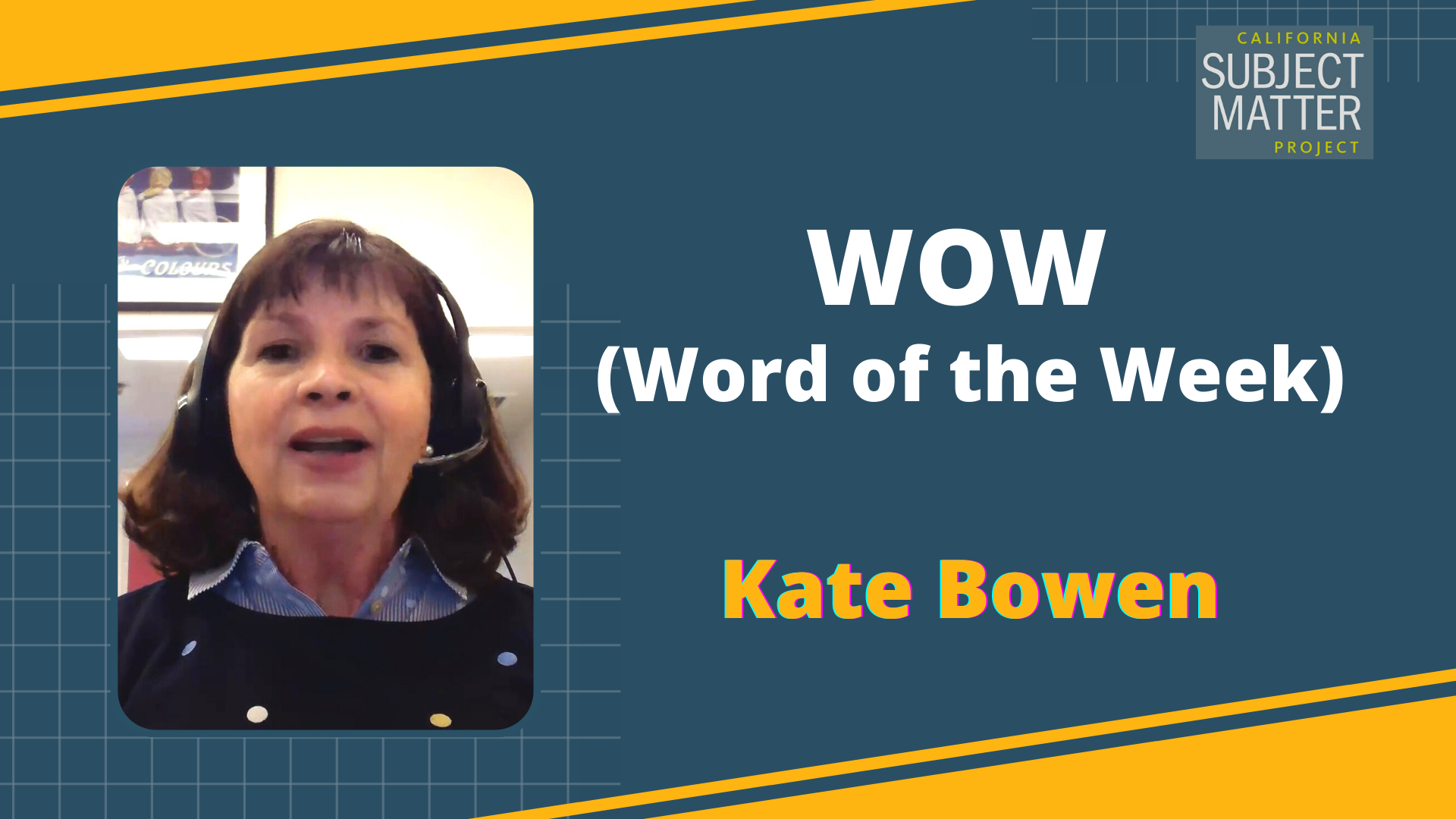Watch the Video
Presenter
Janine Campos, a teacher leader with the California Reading and Literature Project and also a language arts specialist in the National School District.
Transcript
Hi, my name is Janine Campos and I’m a teacher leader with the California Reading and Literature Project. I’m also a language arts specialist in the National School District. The name of the strategy I’d like to share with you is called “Summarizing with the ABCs”. This activity integrates the alphabet and its order.
As the teacher reads a book or a text, students are listening for keywords in order to write a sentence for all 26 letters of the alphabet. With this assignment, students are given opportunities for collaboration and discussion with a classmate or their table groups.
Summarizing with the ABCs can be used with any text, although it may be more straightforward with nonfiction texts. Frequently, students new to summarizing a main idea tend to include many minor details and skip over important ones. What they need when learning to summarize a main idea is practice, practice identifying and differentiating between minor and major details. Since the alphabet has 26 letters, students will get a chance for plenty of practice.
I enjoy using these readers. This size book may also fit under a document camera, if one is available in the classroom. If the classroom has multiple copies of a text, this may be an advantage to you because then you could pass out copies to students to help them finish their assignment.
Other materials could be Google drive documents, that you just quickly type out and put the alphabet on and then quickly share it out with the student. Or you can reach into a cabinet and pull out a physical large sheet of poster paper, then grab some markers and write the alphabet really quick along the side.
You can also use the black line masters that I’ve provided. Those could be printed and copied ahead. Once you’re ready to start reading aloud and you’ve explained the directions to students, give an example of a full sentence. Writing it on the board may be helpful as well. For example: for the letter V, volcanic ash escapes from the chamber below the surface. It’s important to model complete sentences so that the students don’t write phrases or just one word. I anticipate that you may need to consider the needs of all students.
First, you may have some students who are not fluent with the alphabet, even in grades three and above. Students can be directed to a bulletin board display that they can reference, and you let them know they’re allowed to reference, or you can pull up an alphabet chart on your computer, display it on a smart board, or have them choose their own partner, someone who they already have experience with partnering with who can differentiate for them.
Another possible accommodation for a student who is not feeling confident with the writing skills could be to allow them to just write phrases or words. You can have students work on their own, in partners, or have half the class assigned to letters A through M for example, and the other half of signed to letters N through Z.
Another option, if you don’t want kids moving around a ton and desk being moved around, is you can group the students by table seating charts. For example, if the room already has five table groups set up, then separate the alphabet into five ranges.
Finally, you may notice students come up with two or more details that start with the same letter. How will they choose? Before releasing the groups to work, model how they’ll need to talk to their partner or group to decide which fact is the most important and which one can be set aside.
At times, students may come up with a synonym for the word they set aside and use it for a different letter. For example, I read a book about Bigfoot with a group of students, and for the letter H we wanted to write Hoax because we had read a paragraph about how Bigfoot may just be one big hoax, but we had already written a sentence for the letter H so we set that aside and then one student said, “oh, Ms. Campos, what if we just change it to something else? Like, not hoax. What if we just write myth?” So even though myth and hoax are not perfect synonyms, I said, sure, of course. So we went to the letter M and we wrote a sentence about a myth.
And that’s pretty much it. It’s pretty straightforward. You could accommodate this activity for many age groups and just change little details, depending on how you scan the room and assess their writing abilities and alphabet skills.
Overall with this activity, students are going to be practicing how to summarize, how to cite the text, and how to collaborate with a partner and discuss important points versus maybe details that are not as important for the main idea. I’ve tried this with many students and overall I’ve found that the students have a lot of fun using the alphabet to polish their reading and writing skills.
Accompanying Materials & Resources
- Quick Guide: Summarizing with the ABCs (PDF – 1 Page)
- Summarizing with the ABCs with Janine Campos – Template (PDF)



